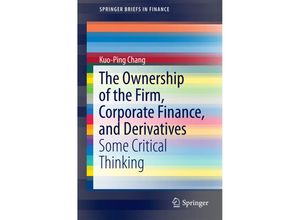This book clarifies several ambiguous arguments and claims in finance and the theory of the
firm. It also serves as a bridge between derivatives corporate finance and the theory of the
firm. In addition to mathematical derivations and theories the book also uses anecdotes and
numerical examples to explain some unconventional concepts. The main arguments of the book are:
(1) the ownership of the firm is not a valid concept and firms' objectives are determined by
entrepreneurs who can innovate to earn excess profits (2) the Modigliani-Miller capital
structure irrelevancy proposition is a restatement of the Coase theorem and changes in the
firm's debt-equity ratio will not affect equity-holders' wealth (welfare) and equity-holders'
preferences toward risk (or variance) are irrelevant (3) all firms' resources are options and
every asset is both a European call and a put option for any other asset and (4) that a first
or residual claim between debt and equity is non-existent while the first claim among
fixed-income assets can actually affect the market values of these assets.



